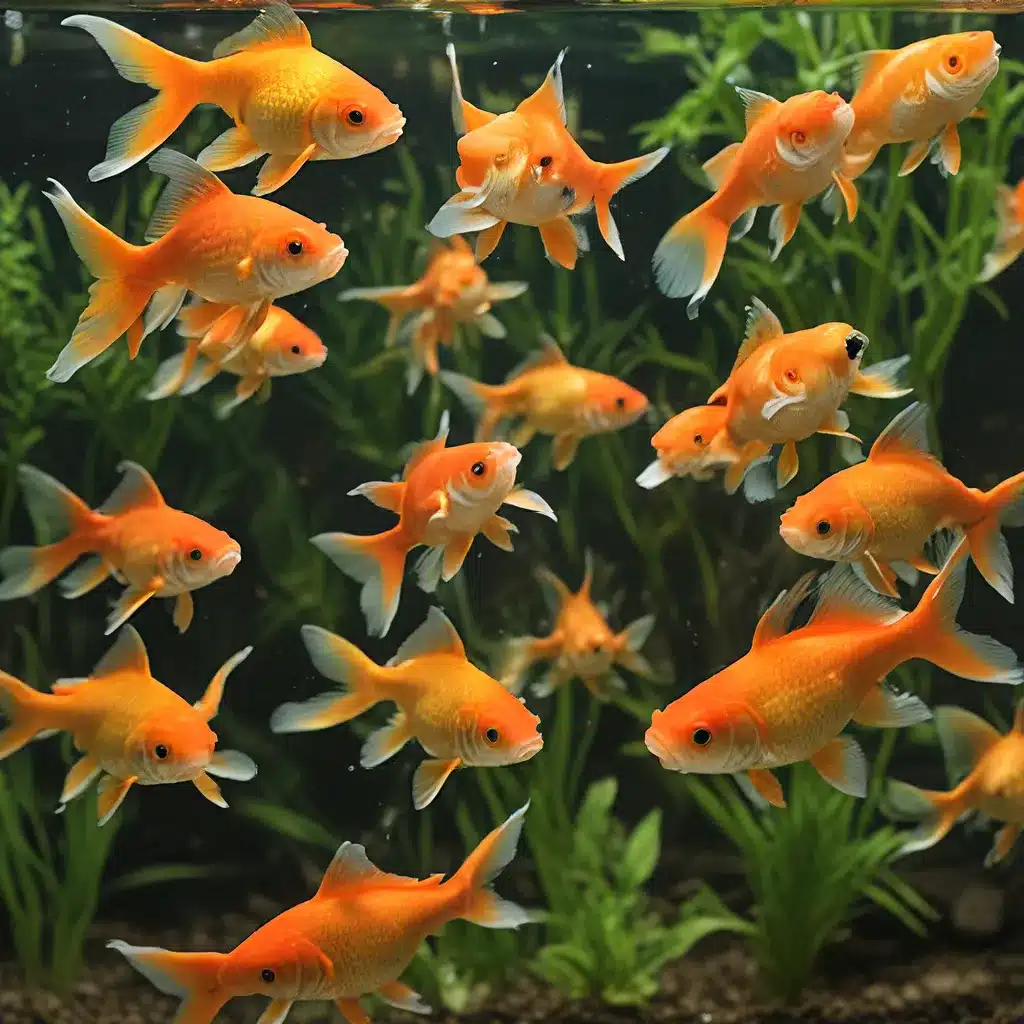
Dispelling the Small Tank Myth
Contrary to popular belief, goldfish do not thrive in tiny bowls or cramped aquariums. In fact, these vibrant fish require ample space to swim and grow to their full potential. The common myth that goldfish can survive in small tanks has led to countless cases of stunted growth, poor water quality, and even premature death.
According to FishLore, the minimum recommended tank size for a single adult goldfish is 20 gallons, with an additional 10 gallons for each additional fish. This allows them to exhibit their natural behaviors, such as foraging, schooling, and exploring their surroundings. Overcrowding not only stresses the fish but also leads to rapid deterioration of water parameters, increasing the risk of disease and other health issues.
Goldfish are also notorious for their voracious appetites and high waste production. A properly sized aquarium, coupled with an efficient filtration system, is essential to maintain optimal water quality and support the fish’s long-term well-being. Neglecting these essential requirements can result in a host of problems, from fin rot and infection to stunted growth and shortened lifespans.
Tailoring the Aquascape for Goldfish
While goldfish may not be the first fish that comes to mind when thinking about aquascaping, their unique needs and behaviors should be taken into consideration when designing their habitat. Unlike their tropical counterparts, goldfish thrive in a more natural environment that mimics their native pond or slow-moving stream habitats.
Incorporating a variety of live plants, such as water lilies, anacharis, and hornwort, can provide essential hiding spots, oxygenation, and natural filtration. These plants can also help absorb excess nutrients from the fish’s waste, preventing algae buildup and maintaining a balanced ecosystem.
Additionally, the substrate should be chosen with care. Goldfish are known for their tendency to dig and uproot plants, so a smooth gravel or sand substrate is preferred over sharp rocks or loose substrate that can cause injury. Carefully selected decor, such as driftwood or smooth river stones, can also provide visual interest and additional hiding places without posing a threat to the fish.
Maintaining Water Quality for Goldfish
Perhaps one of the most critical aspects of goldfish care is ensuring optimal water quality. These hardy fish may be able to tolerate a wider range of water parameters compared to their tropical counterparts, but maintaining a stable and healthy environment is still essential for their well-being.
Regular water testing and partial water changes are crucial to keep ammonia, nitrites, and nitrates in check. Depending on the tank size and stocking density, a 25-50% water change once a week is generally recommended. Using a high-quality water conditioner to remove chlorine and other harmful substances can further enhance the water quality and provide a safe environment for the fish.
Investing in a reliable filtration system is also a must for goldfish aquariums. Mechanical, biological, and chemical filtration work together to remove waste, debris, and dissolved compounds, ensuring the water remains clean and clear. Opting for an oversized filter or using multiple filtration units can help provide the necessary turnover and oxygen levels required by these active fish.
Optimizing Feeding and Nutrition
Goldfish are known for their insatiable appetites, and proper feeding is crucial to maintain their health and growth. Avoid overfeeding, as this can lead to water quality issues and potentially cause digestive problems in the fish.
A balanced diet consisting of high-quality goldfish flakes, pellets, or freeze-dried foods should make up the staple of their meals. Supplementing with occasional live or frozen foods, such as brine shrimp or bloodworms, can also provide a nutritional boost and enrich their natural feeding behaviors.
It’s important to note that goldfish are omnivorous, meaning they require a mix of plant-based and protein-based foods to thrive. Carefully reading the ingredient lists and selecting high-protein, low-fat formulas can help ensure your goldfish are receiving all the essential nutrients they need.
Establishing a consistent feeding routine, such as providing small, frequent meals rather than one large daily portion, can also help regulate their appetite and minimize the risk of overfeeding.
Conclusion
Contrary to common misconceptions, goldfish require a thoughtfully designed environment and a dedicated care routine to reach their full potential and live long, healthy lives. By providing ample space, appropriate aquascaping, and meticulous water quality management, you can create a thriving, sustainable habitat for these vibrant and fascinating fish.
Remember, the key to successful goldfish care lies in understanding their unique needs and tailoring their environment to support their natural behaviors and requirements. With the right approach, you can enjoy the beauty and charm of these captivating aquatic companions for years to come.

